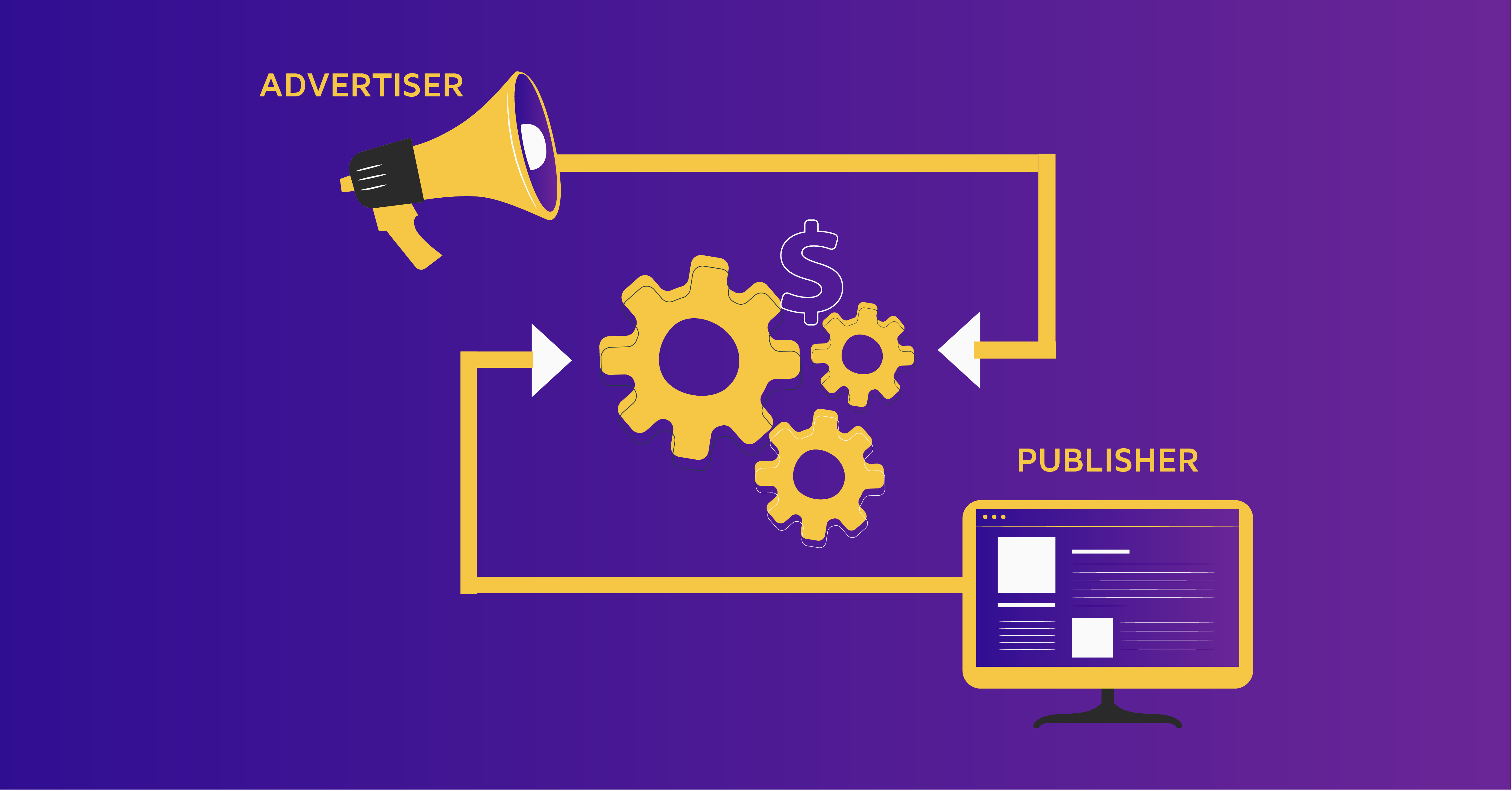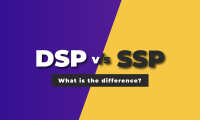Top 8 Ad Exchanges for Publishers in 2023- Definition, Types and How Do They Work?
Direct buying in advertising goes back to the era of print media dominance. Before the rise of programmatic advertising, advertisers and publishers had to do things the old-fashioned way- sit down and manually negotiate the deals for ad space. This practice goes back to the 1800s. Cut to 2023, this ‘haggling in a bazaar’ practice has been moved to a digital marketplace – Ad exchange.
Programmatic advertising is expected to reach a global figure of USD 725 billion by 2026. Ad exchanges are at the forefront of this revolution, providing a streamlined and efficient platform for buying and selling ad space.
What is an ad exchange?
An ad exchange is an online marketplace or an ad tech technology utilized by platforms such as ad networks that enable advertisers and publishers to buy and sell digital advertising inventory in a real-time bidding (RTB) environment. Ad exchanges use programmatic advertising technology to allow ad inventory to be auctioned off to the highest bidder in real-time. Ad exchanges provide an efficient way for advertisers to reach their target audience and for publishers to monetize their website or app inventory.
How does an ad exchange work?
- Publishers partner with an ad exchange and add their ad inventory platform.
- It matches the publisher’s ad inventory with available demand from advertisers who are interested in reaching the publisher’s audience.
- Advertisers bid on the publisher’s ad inventory in real-time, with the highest bid winning the auction.
- The ad exchange serves the ad to the publisher’s audience and tracks the ad impression and performance data.
The publisher earns revenue for the displayed ad based on the chosen pricing model. The ad exchange provides reporting and performance analytics to them to track their ad performance and optimize their inventory for maximum revenue.
What are the benefits of an ad exchange for publishers?
- Publishers can present their ad inventories to buyers across the world. This means that they get to capture demand from global advertisers and make more profits.
- Ad exchanges ensure that publishers are not displaying competitor ads at the same time to maintain the value and integrity of each ad.
- Publishers can set a minimum CPM for the bidding to ensure competitive prices for their inventory units.
- By using an ad exchange, publishers can monitor their choices with respect to the size, design, and color of the ads that they want to display. This helps strike the right balance between ads and user experience on their website.
Types of Ad Exchanges for publishers
- Open Ad Exchange
With Open Ad Exchanges, publishers get to make their ad inventories available for any and every possible buyer including ad tech platforms such as ad networks and DSPs (Demand side platforms). This opens up the possibility of getting the best deals and multiple buyers are bidding on their ad inventories.
- Private Ad Exchange
Private ad exchange is a closed environment where the publishers get to decide who they want to open their inventories for. In the case of this type of Ad Exchange, the buyers available on the platform are mostly large-scale and premium. Publishers control the access of buyers to their inventory. This controlled ad exchange platform ensures that publishers do not face any ad fraud or safety concerns.
What are the top 8 ad exchanges for publishers?
- Google Ad Exchange (DoubleClick Ad Exchange)
Google AdX is considered the top choice of ad exchange by publishers. It offers holistic solutions for publishers looking to generate incremental revenue by tapping into a pool of high-quality advertisers, and premium and programmatic buyers. This platform offers a wide range of inventory types including display, video, native, and mobile ads.
Publishers can leverage the platform’s advanced audience targeting options to reach specific audience segments based on demographics, interests, and behaviors. Google AdX operates on a revenue share model, with publishers receiving a percentage of the revenue generated by their inventory. It is a flexible choice for publishers as it offers both closed and open bidding. However, being qualified by Google AdX can be a challenging process due to their rigorous screening standards.
- Verizon Media
Verizon Media caters to millions of publishers, advertisers, and other dealers on its ad exchange platform. Their prime features include top demand sources, inventory management, revenue tracking, direct deals, and header bidding. They are also very particular about the safety concerns of their publishers and hence, they comply with General Data Protection Regulation.
Verizon Media has developed its own proprietary technology to power large publishers such as TechCrunch, Engadget, and HuffPost. The platform offers comprehensive inventory management capabilities, allowing publishers to track earnings from various channels, including header bidding, programmatic, and direct deals. Their demand pool includes big players such as Amazon and Facebook.
- Open X
OpenX is a very dynamic ad tech platform that includes ad exchange, SSPs, and video ad networks. This ad exchange platform supports various ad formats, has excellent brand-safety tools, and quality header bidding marketplaces. It has over 34K+ advertisers and 400+ Buyers, spanning 190 countries making it an ideal platform for publishers to make the most of their inventories.
The platform offers a range of tools and features that allow publishers to have greater control over their ad inventory and how it is monetized. It lets publishers set their own pricing floors, choose which demand partners they want to work with, and access real-time reporting and analytics to track performance.
- Xandr Marketplace
Xandr Marketplace formerly known as AppNexus provides publishers with a cloud-based software platform that enables them to connect with buyers globally, making it an ideal choice for those looking to expand their reach. This ad tech platform offers advanced features, including audience extension, forecasting, and holistic optimization, enabling publishers to enhance their advertising campaigns and achieve greater success.
With a marketplace that facilitates connections between media buyers, owners, and distributors, Xandr transacts 6.7 billion impressions every day across a variety of devices and formats. It serves as a one-stop shop for global access to premium supply and demand, making it one of the world’s largest marketplaces for digital advertising.
- Smaato
Smaato’s Digital Ad Tech Platform is a comprehensive solution for publishers looking to optimize their monetization efforts through mobile advertising. The platform offers a free ad server and SMX (Smaato Mobile Ad Exchange) that serves as both an OpenRTB and ad network mediation platform for mobile websites and apps. Whether publishers are looking to weigh in on in-app advertising or mobile advertising in general, SMX is an ideal solution that offers a comprehensive suite of tools to meet their needs.
The platform’s tools give publishers the ability to create their own walled gardens, improving transparency for both publishers and marketers. Smaato’s platform provides publishers with complete control over their advertising inventory, allowing them to access all of their demand sources.
- Index Exchange
The rise of Connected TV (CTV) and Over-the-Top (OTT) advertising is one of the top ad tech trends of 2023. To make the most of these trends, publishers must be proactive in monetizing them. By partnering with a company like Index Exchange, which has a dynamic marketplace and proven success in maximizing CTV yields, publishers can ensure they’re getting the most out of their advertising efforts.
Index Exchange is the prime choice of many digital businesses. It connects the publishers to some of the premium buyers and offers publishers complete control over their ad inventory and pricing. This ad exchange platform enables media owners to grow revenue and marketers to reach consumers on any screen, through any ad format. It is a safe and transparent omnichannel marketplace that provides a trusted experience for consumers.
- Pubmatic
Pubmatic is an independent technology company that provides the inventory, data, and insights that publishers need to drive lucrative and incremental results. It gives them control of the levers that drive success for their business. They empower publishers with independence and access to unique demands while maintaining a strict commitment to transparency and quality.
Publishers can now take charge of their revenue opportunities and user experience across a range of channels and formats throughout Pubmatic’s convergence of technical innovation, unique demand, and sophisticated analytics. The most critical of these channels are Connected TV (CTV), online video, mobile apps, and web platforms. By leveraging Connect for Publishers, a cutting-edge product from Pubmatic that combines platform technology and dedicated service, publishers can maximize the value of their inventory and data by packaging and transacting them more efficiently.
- MoPub
Industry experts have likened MoPub’s advanced ad serving capabilities and real-time bidding exchange to those of DoubleClick, making it an attractive option for app publishers looking to monetize their mobile inventory. This ad serving platform enables mobile app publishers to monetize their activities through ad serving, ad network mediation, and real-time bidding exchange.
The company serves billions of ads per day to users on both Android and iOS platforms. MoPub’s three-piece platform for mobile publishers was founded by app developers who appreciate the use of an open-source SDK. MoPub provides publishers and developers with the flexibility to monetize their apps through a range of options. They can choose between direct ads, ad networks, or a real-time bidding system, depending on their needs and preferences.
By utilizing an ad exchange platform, publishers can gain access to real-time bidding and programmatic advertising, allowing them to achieve higher fill rates and maximize their revenue streams. Publishers can tackle the competitive market by leveraging the power of ad exchange and their advanced targeting and optimization capabilities.




Leave a Reply